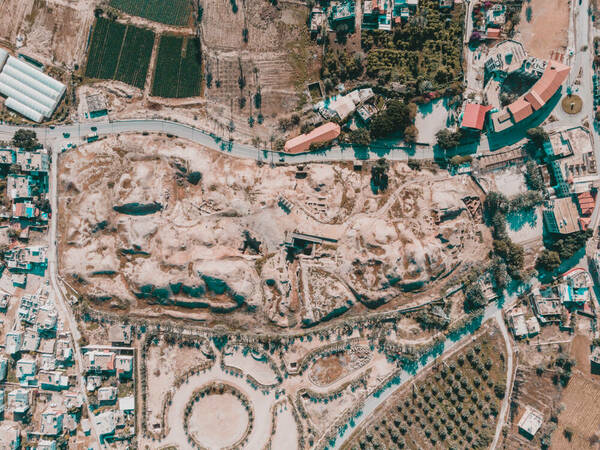The newly designated World Heritage Site encompasses the Tell es-Sultan archaeological site, which boasts prehistoric ruins dating back to the ninth millennium BC. Notably, Tell es-Sultan is situated just outside the boundaries of the ancient city of Jericho.
According to UNESCO, the site's historical significance lies in its emergence as a permanent settlement between the 9th and 8th millennia BC, owing to the fertile oasis soil and easy access to water. This oval-shaped mound has yielded evidence of one of humanity's earliest known villages and a significant Bronze Age town dating back to 2,600 BC.
Located approximately 2 kilometers (1.2 miles) from the remains of Jericho's first city, the site is replete with historical treasures. This includes ruins of significance to Jewish history, such as a synagogue dating back to the first century BC. Jericho itself ranks among the oldest continuously inhabited cities globally and is located in an area of the Israeli-occupied West Bank administered by the internationally recognized Palestinian Authority.

Israel has strongly condemned the UNESCO decision, characterizing it as a "cynical ploy." The foreign ministry of Israel expressed its disapproval and vowed to work with like-minded nations within the organization to challenge the decision. It's worth noting that Israel withdrew from UNESCO in 2019, alleging an anti-Israel bias, but did participate in the latest meeting held in Saudi Arabia.
The West Bank, along with Gaza and east Jerusalem, was captured by Israel in the 1967 Middle East conflict. Palestinians aspire to have all three territories as part of their future state. However, with over a decade passing since any substantial peace negotiations, the prospects for Palestinian statehood remain uncertain, given the current leadership in Israel.
Throughout the Israeli-Palestinian conflict, historical heritage has been a contentious issue. Both sides have employed archaeology and conservation to assert their unique connections to the Holy Land. The Palestinian Authority, recognized as a non-member observer state by the United Nations a decade ago, welcomed the designation of Tell es-Sultan as a World Heritage Site. PA President Mahmoud Abbas emphasized that it "testifies to the authenticity and history of the Palestinian people" and pledged to preserve the site for the benefit of all humanity.
Tell es-Sultan, located in the Jordan Valley, is believed to predate Egypt's pyramids and features an oval-shaped mound containing prehistoric deposits and artifacts. Notably, it is considered one of the oldest fortified cities globally, with skulls and statues discovered on the site. The site boasts a Neolithic-era tower with an internal stairway dating back at least to 8,000 BCE. Bronze Age archaeological findings indicate signs of urban planning, while Roman-era remnants include a wine press and pre-Neolithic pottery.
Additionally, the site is home to Hisham's Palace mosaic, an Umayyad castle from the mid-eighth century. This palace, constructed during the rule of Umayyad Caliph Hisham ibn Abdul Malik, stands out for its intricate structural design and elaborate interiors, drawing inspiration from the region's pre-Islamic Byzantine rulers.